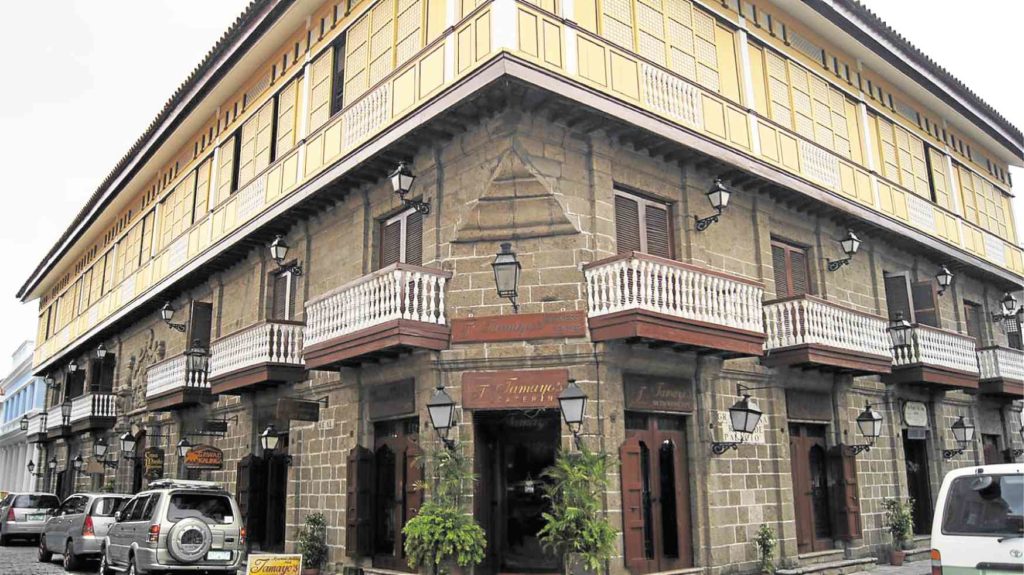Window to the past

Museum gives guests a glimpse of an ilustrado family’s charmed way of life. https://www.megacities-go-services.com
“Imagine if houses were still this way,” I whisper to my mom as we ascend the first flight of stairs leading to Casa Manila’s receiving area. I run my hand on the polished handrails and relish the feel of the rich dark wood.
A massive painting upon reaching the first landing greets guests. Our gaze wander to the intricately carved ceiling tiles. We haven’t even reached the main floor’s landing and already, the opulence of the Filipino colonial mansion’s interiors is beginning to overwhelm us.
“Please stay on the red carpet,” a guide reminds us. Visitors are not allowed to go beyond the red carpet to keep the mansion’s hardwood floors scratch-free. Certain rooms and furniture are also cordoned off, one can only observe and admire, not touch.
Built in the ’80s after intensive research by Intramuros Administration, Casa Manila Museum gives us a glimpse of an ilustrado family’s charmed way of life. The circa 1850 stone and wood three-story house is a replica of the house Don Severino Mendoza, a Binondo merchant. J. Ramon Faustmann was the architect.
The second floor of the house has an oficina and biblioteca (office and library). There are also dormitories (bedrooms) which were specifically for afternoon naps or siesta. The lower level bedrooms were also where the grandparents or unmarried uncles and aunts stayed.
Article continues after this advertisementThe third level has a bigger and grander anteroom, also referred to as the caida.
Article continues after this advertisementNext room is the sala, which is so spacious and filled with such rich furniture it can pass off as a hotel lobby. Sofas, 19th century reclining chairs, rocking chairs, marble top tables, dark wood pedestals, a grandfather’s clock, a grand piano and a harp fill up the huge room.
Among the things that which got me curious were the ceramic bowls placed between chairs and in front of sofas. They were too big to be ashtrays and they’re definitely not orinolas. They turned out to be spittoons.
From the sala, visitors to Casa Manila are led to the oratorio or prayer room. Off it are considerably-sized bedrooms for the immediate family.
At the other end of the anteroom is the comedor or dining room. Above each end of the large dining table hang two punkah, a type of ceiling fan that swings back and forth by pulling a cord which originated from India, to keep the family and guests cool while having their supper and to shoo flies away from the food.
It made me wonder: How many househelp does one ilustrado family need to have the house up and running?
Outside the dining room is the cocina or kitchen whose one unique feature was an icebox, the early 20th century version of a refrigerator. Back then, wealthy families would have ice delivered daily to their homes for P5 a month, or P2,000 today.
At the back of the house is a separate toilet and bath.
What’s amusing is the two-seater toilet looks like a loveseat. Apparently, in the 19th century, you and your friend can do your business together at the same time! There’s even enough space between for a chessboard, if going to the toilet will take longer than expected.
I’ve gone to Casa Manila Museum when I was a lot younger, as a student, but visiting the mansion now as an adult gave a different feeling.
Maybe it’s because being a grownup, you have developed a deeper appreciation of our heritage. Places like Intramuros are a must-visit, even for those living in Manila. There’s so much to see and re-learn about our culture and it wouldn’t hurt if we are reminded from time to time how culturally rich we have always been.
(References: Intramuros: Revisit the Past in Casa Manila; Casa Manila Museum: A Description of Each Floor)
Casa Manila Museum is located right across San Agustin Church, along General Luna St. in Intramuros, Manila.